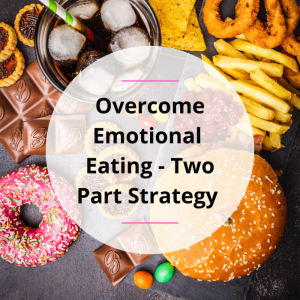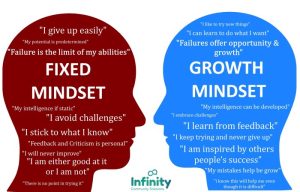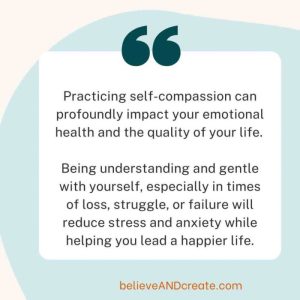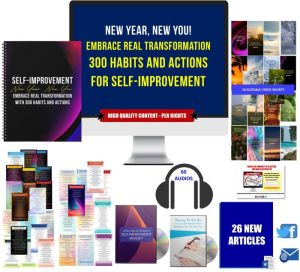How Mindfulness Helps With Stress

How mindfulness helps with stress is a question increasingly explored in today’s fast-paced world. Stress, a ubiquitous aspect of modern life, impacts our physical and mental well-being profoundly. From deadlines at work to family responsibilities, the sources of stress are numerous and varied. This exploration delves into the powerful connection between mindfulness practices and stress reduction, examining how these techniques can equip individuals with the tools to navigate daily challenges with greater ease and resilience.
This article will investigate various mindfulness techniques, including meditation, deep breathing exercises, and body scans, detailing their mechanisms for stress alleviation. We’ll explore practical applications for daily life, offering step-by-step guides and actionable tips for integrating mindfulness into even the busiest schedules. Furthermore, we’ll examine the role of mindfulness in managing anxiety, depression, improving sleep quality, and fostering personal growth.
Mindfulness and Stress Reduction

Mindfulness, the practice of paying attention to the present moment without judgment, offers a powerful antidote to the pervasive effects of stress. By cultivating awareness of our thoughts, feelings, and bodily sensations, we can develop a healthier relationship with stress, reducing its negative impact on our well-being. This involves shifting our focus from anxious anticipation of the future or rumination on the past to a grounded presence in the here and now.
This shift in perspective can significantly alter our physiological and psychological responses to stressful situations.Stress, in its various forms, triggers a cascade of physiological responses designed to prepare the body for “fight or flight.” This involves the release of stress hormones like cortisol and adrenaline, leading to increased heart rate, blood pressure, and muscle tension. Chronic stress, however, can overwhelm the body’s adaptive mechanisms, contributing to a range of health problems, including cardiovascular disease, weakened immunity, digestive issues, and mental health challenges such as anxiety and depression.
Everyday Stressors and Their Impact
Everyday life presents a multitude of stressors, ranging from minor inconveniences to major life events. Traffic jams, work deadlines, financial worries, relationship conflicts, and even seemingly trivial daily hassles can accumulate, creating a constant state of low-level stress or triggering acute stress responses. For instance, the pressure of meeting a work deadline might lead to sleep deprivation, irritability, and impaired decision-making.
Financial anxieties can manifest as headaches, stomach problems, and difficulty concentrating. The cumulative effect of these stressors can significantly impact overall well-being, leading to burnout, decreased productivity, and strained relationships. Understanding the impact of these everyday stressors is crucial to developing effective coping mechanisms, and mindfulness provides a valuable tool in this process.
Mindfulness and Anxiety Management
Mindfulness, the practice of paying attention to the present moment without judgment, offers a powerful approach to managing anxiety. By cultivating awareness of thoughts, feelings, and bodily sensations, individuals can learn to respond to anxious experiences in a more skillful and less reactive way. This approach differs from traditional anxiety treatments that may focus primarily on changing thoughts or behaviors, instead offering a direct path to understanding and regulating the emotional experience itself.Mindfulness can effectively interrupt negative thought patterns, the very foundation of many anxiety disorders.
Anxiety often stems from a cycle of worrying about the future or ruminating on the past. Mindfulness helps break this cycle by gently guiding attention back to the present moment, disrupting the flow of anxious thoughts and preventing them from spiraling out of control. This shift in focus allows for a greater sense of control and reduces the intensity of anxious feelings.
Interrupting Negative Thought Patterns Through Mindfulness
The process of interrupting negative thought patterns involves actively recognizing when the mind is caught in a cycle of worry or rumination. Instead of engaging with or fighting these thoughts, mindfulness encourages a compassionate observation. This means acknowledging the thoughts without judgment, noticing their presence, and gently redirecting attention back to the present moment. For example, if someone is experiencing anxiety about a work presentation, they might notice the tightening in their chest and the racing of their thoughts.
Instead of getting caught up in the worry, they can bring their attention to their breath, the feeling of their feet on the floor, or the sounds around them. This redirection allows the anxious thoughts to lose their grip, lessening their power and impact.
Mindfulness Techniques for Anxiety Reduction
Mindfulness techniques offer practical tools for managing anxiety. These techniques can be incorporated into daily life, providing ongoing support and resilience.
A common and effective technique is mindful breathing. This involves focusing on the sensation of the breath entering and leaving the body. The breath becomes an anchor, grounding the individual in the present moment and reducing the intensity of anxious thoughts and feelings. Even a few minutes of mindful breathing can provide a noticeable calming effect. Imagine focusing on the rise and fall of your abdomen as you inhale and exhale, noticing the natural rhythm of your breath without trying to change it.
Body scan meditation is another helpful technique. This involves systematically bringing awareness to different parts of the body, noticing any sensations without judgment. This can help individuals become more attuned to their physical experience of anxiety, such as muscle tension or rapid heartbeat, allowing them to respond to these sensations with compassion and understanding, rather than fear or avoidance. The practice begins by focusing on the toes and gradually moving upward through the body, noticing any sensations – tingling, warmth, pressure, etc.
– without judgment.
Mindful walking transforms a simple activity into a meditative practice. By paying close attention to the sensations of walking – the feeling of the feet on the ground, the movement of the legs, the rhythm of the steps – individuals can cultivate present moment awareness and reduce anxiety. The focus on the physical sensations of walking helps to quiet the mental chatter and promote a sense of calm.
Imagine focusing on the weight shift with each step, noticing the ground beneath your feet, the air on your skin.
Mindfulness and Depression Support
Mindfulness practices offer a valuable approach to managing depressive symptoms and fostering overall well-being. By cultivating present moment awareness, individuals can begin to detach from negative thought patterns and cultivate a more compassionate relationship with themselves and their experiences. This, in turn, can lead to improved mood regulation and a greater sense of control over one’s emotional state.Mindfulness techniques work by interrupting the cycle of negative thinking that often characterizes depression.
When we are caught up in rumination or worry, we are essentially reinforcing negative emotions. Mindfulness helps us to observe these thoughts and feelings without judgment, allowing them to pass without becoming entangled in their grip. This creates space for more positive emotions and perspectives to emerge.
Mindfulness’s Impact on Mood and Depressive Symptoms
Mindfulness-based interventions, such as Mindfulness-Based Cognitive Therapy (MBCT) and Mindfulness-Based Stress Reduction (MBSR), have demonstrated effectiveness in reducing depressive symptoms. Studies show that regular mindfulness practice can lead to significant improvements in mood, decreased feelings of hopelessness and helplessness, and an increased ability to manage difficult emotions. The mechanism behind this is the cultivation of self-awareness, which allows individuals to identify and respond to their emotional states in a more constructive way, rather than being passively controlled by them.
For example, a person struggling with depressive thoughts might notice the sensations of tension in their body, acknowledge the thought without judgment (“I’m noticing a thought about failure”), and then gently redirect their attention to their breath or another sensory experience. This simple act of observation can create a sense of distance from the negative thought, reducing its power.
Mindfulness and Enhanced Self-Compassion and Acceptance
A core component of mindfulness is self-compassion – treating oneself with the same kindness and understanding one would offer a friend struggling with similar challenges. Depression often involves harsh self-criticism and feelings of inadequacy. Mindfulness practices help to counter these negative self-perceptions by fostering self-acceptance and recognizing that difficult emotions are a normal part of the human experience. By cultivating a non-judgmental awareness of one’s thoughts and feelings, individuals can begin to develop a more compassionate and supportive inner voice.
This can involve practicing loving-kindness meditation, where one directs feelings of compassion towards oneself and others, or simply acknowledging one’s suffering with empathy and understanding. The ability to accept difficult emotions without judgment is crucial for healing and recovery from depression.
Resources for Individuals Seeking Support for Depression
Finding the right support is essential when dealing with depression. A multi-faceted approach often proves most effective. Here are some valuable resources:
- Therapy and Counseling: Seeking professional help from a therapist or counselor is a crucial step. Therapists can provide guidance, support, and evidence-based treatments tailored to individual needs.
- Mindfulness-Based Interventions: Look for therapists or programs offering Mindfulness-Based Cognitive Therapy (MBCT) or Mindfulness-Based Stress Reduction (MBSR). These programs integrate mindfulness practices into a therapeutic framework.
- Support Groups: Connecting with others who understand the challenges of depression can provide valuable emotional support and a sense of community. Many online and in-person support groups are available.
- Mental Health Hotlines and Crisis Lines: In times of crisis, these services offer immediate support and can connect individuals with emergency care. Examples include the National Suicide Prevention Lifeline and the Crisis Text Line.
- Online Resources: Reputable websites and organizations offer information, support, and self-help resources for individuals dealing with depression. Examples include the National Institute of Mental Health (NIMH) and the Depression and Bipolar Support Alliance (DBSA).
Building Resilience Through Mindfulness

Mindfulness, the practice of paying attention to the present moment without judgment, significantly enhances our ability to navigate life’s challenges and build resilience. By cultivating a non-reactive awareness of our thoughts, feelings, and sensations, we create space between stimulus and response, fostering a more adaptable and robust approach to stress. This allows us to better cope with adversity and bounce back from setbacks, ultimately leading to a greater sense of well-being.Mindfulness cultivates emotional resilience by fostering self-awareness and emotional regulation.
Through regular practice, individuals become more attuned to their emotional landscape, recognizing patterns and triggers that contribute to stress and distress. This increased self-awareness empowers them to choose more thoughtful responses instead of reacting impulsively to difficult situations. For example, someone prone to anger might notice the physiological sensations of rising tension before an outburst, giving them an opportunity to pause, breathe, and choose a calmer response.
This conscious choice, facilitated by mindfulness, strengthens their ability to manage their emotions effectively, preventing emotional overwhelm and fostering resilience.
Mindfulness and Stress Tolerance
The relationship between mindfulness and stress tolerance is deeply intertwined. Mindfulness practices, such as meditation and mindful breathing, directly impact the body’s stress response. By focusing on the present moment, individuals can reduce the intensity of their physiological reactions to stressors. Studies have shown that regular mindfulness practice can lower cortisol levels (the stress hormone), decrease heart rate variability, and promote a sense of calm, even in the face of challenging circumstances.
This physiological shift translates into a greater capacity to tolerate stress without experiencing significant distress or burnout. For instance, a mindful individual facing a demanding work deadline might experience some stress, but they are less likely to be overwhelmed by anxiety or panic because their physiological response is more regulated.
Managing Challenging Situations with Mindfulness
Mindfulness practices offer practical tools for navigating challenging situations. When faced with difficult circumstances, mindful individuals can employ techniques such as mindful breathing to calm their nervous system, and mindful observation to gain perspective without judgment. They can also use mindful self-compassion to acknowledge their struggles without self-criticism. For example, during a conflict with a loved one, a mindful approach might involve pausing to observe one’s own emotional reactions, listening attentively to the other person’s perspective, and responding with empathy and understanding rather than defensiveness.
This ability to respond thoughtfully and compassionately, rather than react impulsively, is a hallmark of resilience built through mindfulness.
Mindfulness and Sleep: How Mindfulness Helps With Stress
Stress significantly impacts sleep quality, often leading to difficulty falling asleep, frequent awakenings, and overall poor sleep. This disruption can negatively affect mood, cognitive function, and physical health, creating a vicious cycle where stress exacerbates sleep problems, and poor sleep intensifies stress. Understanding this connection is crucial for developing effective strategies to improve both sleep and stress management.Mindfulness practices offer a powerful approach to improving sleep hygiene by addressing the underlying causes of sleep disturbances.
By cultivating present moment awareness, mindfulness helps to quiet the racing thoughts and anxieties that often keep us awake at night. It also promotes relaxation and reduces physiological arousal, creating a more conducive environment for sleep. This approach focuses on developing healthy sleep habits and addressing the mental and emotional factors that interfere with restful sleep.
The Impact of Stress on Sleep Quality, How mindfulness helps with stress
Stress hormones, such as cortisol, are naturally released in response to stressful situations. However, chronically elevated cortisol levels, often resulting from ongoing stress, disrupt the body’s natural sleep-wake cycle. This disruption manifests in various ways, including difficulty falling asleep (insomnia), frequent awakenings throughout the night, and early morning awakenings. Furthermore, stress can lead to restless sleep, characterized by vivid dreams or nightmares, leaving individuals feeling unrefreshed even after a full night’s rest.
The resulting sleep deprivation further amplifies stress levels, creating a negative feedback loop. For example, someone experiencing job-related stress might find themselves constantly worrying about deadlines, leading to insomnia and daytime fatigue, which in turn impacts their work performance and increases their stress levels.
How Mindfulness Practices Improve Sleep Hygiene
Mindfulness techniques, such as meditation and mindful breathing exercises, help regulate the nervous system and reduce the production of stress hormones. By focusing attention on the present moment—the sensation of breath, body, or sounds—the mind is gently drawn away from anxious thoughts and worries about the future or regrets about the past. This shift in focus allows the body to relax and prepares it for sleep.
Mindful practices also encourage healthy sleep habits by establishing a consistent bedtime routine, creating a relaxing pre-sleep environment, and promoting a more mindful approach to sleep itself, reducing the pressure to fall asleep quickly. For instance, practicing mindful breathing before bed can calm the mind and body, making it easier to fall asleep. Similarly, a consistent bedtime routine, including a mindful activity like a warm bath or gentle stretching, can signal to the body that it’s time to rest.
A Guided Meditation Script for Promoting Relaxation and Sleep
Lie down comfortably in bed, allowing your body to sink into the mattress. Close your eyes gently. Bring your attention to your breath, noticing the natural rhythm of your inhales and exhales. Feel the gentle rise and fall of your chest or abdomen. If your mind wanders, which is perfectly normal, simply acknowledge the thought without judgment and gently redirect your attention back to your breath.
Now, bring your awareness to your body. Notice any sensations—the weight of the blanket, the coolness of the sheets, the warmth of your body. Don’t try to change anything; simply observe. Imagine a wave of relaxation washing over you, starting from your toes and moving slowly up your body, releasing any tension you may be holding.
Continue to focus on your breath, allowing yourself to sink deeper into relaxation with each exhale. Repeat silently to yourself, “I am safe, I am calm, I am letting go.” Continue this practice for 10-15 minutes, or until you feel ready to drift off to sleep.
Mindfulness and Addiction Recovery
Mindfulness practices offer a powerful pathway to recovery for individuals struggling with addiction. By cultivating present moment awareness, individuals can interrupt the cycle of compulsive behavior and develop healthier coping mechanisms. This approach focuses on building self-awareness and acceptance, crucial elements in overcoming addiction’s grip.Mindfulness helps individuals develop a deeper understanding of their thoughts, feelings, and bodily sensations without judgment.
This self-awareness allows them to recognize early warning signs of cravings and triggers, providing an opportunity to respond consciously rather than reactively. The practice empowers individuals to make informed choices, fostering a sense of agency and control often lost in the throes of addiction.
Mindfulness Techniques for Managing Cravings and Triggers
Mindfulness techniques directly address the intense urges associated with addiction. By focusing on the present moment, individuals can observe cravings without acting on them. This non-judgmental observation helps to reduce the intensity of the craving and prevents impulsive behavior. Similarly, mindfulness can help individuals identify and manage triggers – situations, people, places, or emotions that provoke cravings. Instead of reacting automatically, they can develop strategies to navigate these triggers effectively.
For example, if a specific location triggers a craving, practicing mindfulness in that location, focusing on sensory details like sights and sounds, can help desensitize the individual to the trigger.
Resources for Individuals Struggling with Addiction
Finding support is crucial during addiction recovery. A multi-faceted approach often yields the best results. Here are some resources that can provide valuable assistance:
- Support Groups: Groups like Alcoholics Anonymous (AA), Narcotics Anonymous (NA), and SMART Recovery offer peer support and a sense of community. These groups provide a safe space to share experiences and learn from others who understand the challenges of addiction.
- Therapy: Cognitive Behavioral Therapy (CBT) and Dialectical Behavior Therapy (DBT) are effective therapeutic approaches that incorporate mindfulness techniques to address addictive behaviors and develop coping skills. A therapist can provide personalized guidance and support.
- Mindfulness-Based Interventions: Mindfulness-Based Relapse Prevention (MBRP) is a specific program that combines mindfulness practices with relapse prevention strategies. This program helps individuals identify and manage high-risk situations and develop coping mechanisms for cravings and triggers.
- Addiction Treatment Centers: These centers offer comprehensive programs that combine therapy, medication, and other support services. They provide a structured environment conducive to recovery.
- Online Resources: Numerous websites and apps offer information, support, and mindfulness exercises for addiction recovery. SAMHSA’s National Helpline (1-800-662-HELP) provides confidential treatment referral and information services.
Mindfulness and Personal Growth
Mindfulness, the practice of paying attention to the present moment without judgment, acts as a powerful catalyst for personal growth. By cultivating awareness of our thoughts, feelings, and sensations, we gain valuable insights into our inner world, paving the way for positive change and a deeper understanding of ourselves. This enhanced self-awareness allows us to make conscious choices that align with our values and goals, leading to greater fulfillment and well-being.Mindfulness fosters a deeper connection between our thoughts, emotions, and actions.
This increased self-awareness is the cornerstone of personal growth, enabling us to identify unhelpful patterns and cultivate more constructive behaviors. The practice helps us to observe our emotional responses without getting swept away by them, creating space for healthier coping mechanisms.
Mindfulness and Self-Awareness
Mindfulness cultivates self-awareness by encouraging a non-judgmental observation of internal experiences. Through regular practice, individuals become more attuned to their thoughts, feelings, bodily sensations, and behaviors. This heightened awareness allows for the identification of recurring patterns, triggers, and emotional responses, providing valuable insights into personal strengths and weaknesses. For example, someone might notice a tendency to become irritable when hungry, leading them to incorporate mindful eating practices into their routine.
This increased self-awareness facilitates a more conscious and intentional approach to life.
Mindfulness and Emotional Regulation and Self-Compassion
Mindfulness practices directly support emotional regulation and self-compassion. By observing emotions without judgment, individuals learn to distance themselves from their emotional reactivity. Instead of being overwhelmed by difficult feelings, they can approach them with curiosity and acceptance. This process fosters emotional resilience, allowing individuals to navigate challenging situations with greater equanimity. Simultaneously, mindfulness cultivates self-compassion, encouraging kindness and understanding towards oneself, especially during moments of struggle or self-criticism.
This self-compassion reduces the tendency to engage in harsh self-judgment, promoting a more positive and supportive inner dialogue. For instance, instead of berating oneself for a mistake, a mindful individual might acknowledge the error, learn from it, and offer themselves words of encouragement.
Integrating Mindfulness into a Personal Self-Care Routine
A mindful self-care routine can be easily integrated into daily life. The key is to start small and gradually incorporate mindfulness practices into existing routines.A practical plan might include:
- Mindful Breathing Exercises: Start each day with 5-10 minutes of focused breathing. This can be done sitting comfortably, focusing on the sensation of the breath entering and leaving the body.
- Mindful Movement: Incorporate mindful walking or yoga into your day. Pay attention to the sensations in your body as you move, noticing the rhythm of your breath and the feeling of your feet on the ground.
- Mindful Eating: Pay close attention to the taste, texture, and smell of your food. Eat slowly and savor each bite, without distractions.
- Mindful Self-Reflection: Set aside a few minutes each day for quiet reflection. Observe your thoughts and feelings without judgment, noticing any patterns or recurring themes.
- Mindful Listening: When engaging in conversations, practice active listening. Focus fully on the speaker, paying attention to both their words and their nonverbal cues.
Consistent practice is crucial. Even short periods of mindfulness throughout the day can accumulate significant benefits, contributing to increased self-awareness, emotional regulation, and overall personal growth. Remember that consistency, not perfection, is the key.
In conclusion, the evidence strongly suggests that mindfulness is a valuable tool for managing stress and enhancing overall well-being. By cultivating a present-moment awareness, individuals can learn to observe their thoughts and emotions without judgment, interrupting negative thought patterns and fostering emotional regulation. The integration of mindfulness practices into daily routines, whether through formal meditation or informal mindful moments, offers a pathway to increased resilience, improved mental clarity, and a more fulfilling life.
Embracing mindfulness is not merely a trend; it’s a proactive approach to navigating the complexities of modern life with greater peace and balance.
Detailed FAQs
Is mindfulness a quick fix for stress?
No, mindfulness is a practice that requires consistent effort. While you may experience some benefits immediately, sustained stress reduction comes with regular practice.
Can I practice mindfulness if I’m not flexible or athletic?
Absolutely! Mindfulness practices are adaptable to all fitness levels. They focus on mental awareness, not physical exertion.
How long should I meditate for each session?
Even 5-10 minutes daily can be beneficial. Start small and gradually increase the duration as you feel comfortable.
What if my mind wanders during meditation?
Mind wandering is normal. Gently redirect your attention back to your breath or chosen focus when you notice it.






